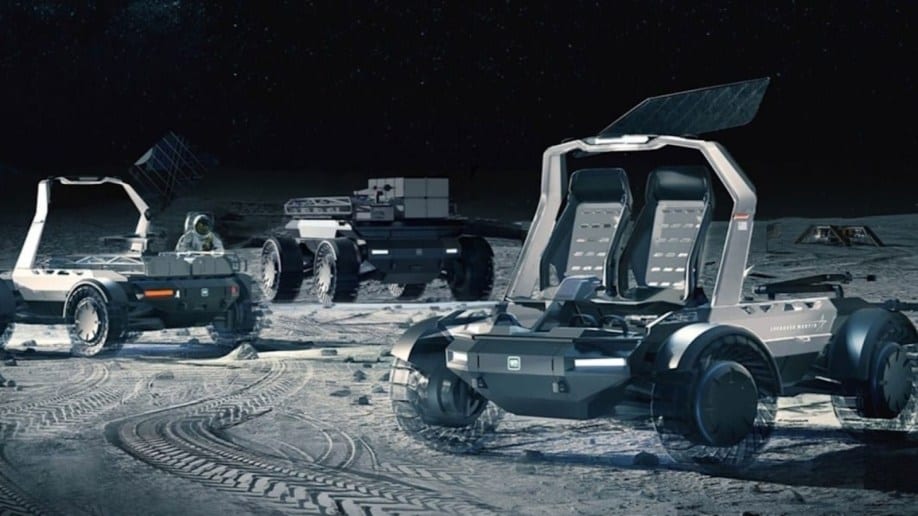
And we hope it’s reliable. The nearest dealer service bay is about 238,900 miles away.
Okay, They Don’t Actually Call it a Truck
General Motors this week showed off its latest electric pickup, but it isn’t another version of the upcoming 2024 Silverado EV. It’s a moon rover. Officially, it’s called the Lunar Terrain Vehicle, or LTV. And GM doesn’t call it a truck. But we know a standard-cab, short-bed pickup when we see one.
To be clear, the design is just a proposal at this stage.
NASA last year solicited designs for vehicles it might use to move astronauts and their gear around the lunar surface as part of its ongoing Artemis program. The program, named for the sister of Apollo, aims to put the first woman and the next man on the moon in 2024.
GM announced in May that it would team up with Lockheed Martin to submit a design.
Now, the companies have published a few details about the design that resulted, along with a CGI animated video showing LTVs as they might serve on the moon.
They’ve Done This Before
GM has some experience with way, way off-road vehicles. The company built the only wheeled vehicle that has ever carried humans on the moon. The 1969 Apollo moon rover, officially the GM/Boeing Lunar Roving Vehicle, was designed with a very short lifespan in mind. Astronauts used them for their brief visits to the lunar surface, then left them behind. Three remain on the moon today.
The Buyer is More Demanding This Time
This latest effort is a very different vehicle.
For one thing, it’s intended to last. NASA asked for a vehicle that will operate for 10 years so that astronauts could leave it behind for subsequent missions to use.
The LTV remains an open-air design, presumably to save weight and complexity. A pair of seats fold down when not in use, allowing the entire surface to carry cargo when the buggy is driven autonomously.
The LTV rides on airless tires a bit like the design GM and Michelin hope to sell on Earth by 2024.
We don’t know what powers it, but the single roll bar is capped with a solar panel as if to recharge the batteries that power electric motors. The lunar day lasts nearly 30 days – about 15 days of sunshine and 15 days of darkness. So we expect the LTV to rely on some other battery recharging system, with the solar panel just a supplement.
Others Can Play, Too
GM isn’t the only automaker with a moon buggy division. Toyota has designed a rover for the Japanese space agency JAXA. That one is considerably more complex. It’s enclosed, with its own airlock and life support systems.
But JAXA has no current plans for a manned mission to the moon. NASA plans to test the launch vehicle for the Artemis program this spring.
All About Light-Weight Batteries
Batteries, after all, are likely the reason GM is involved in the project.
The batteries that power today’s electric cars are extremely heavy. The GMC Hummer EV pickup reportedly tips the scales at over 9,000 pounds – almost as much as three Chevy Equinox SUVs. Weight doesn’t work in spaceflight. Every pound NASA needs to lift out of Earth’s gravity requires more fuel and prevents scientists from bringing something else useful. So the LTV will need to be as light as possible.
As GM researches how to take the LTV from a design concept to a real vehicle in a NASA hangar somewhere, it will have to study how to lighten the batteries. That research could pay real dividends in more terrestrial electric trucks.







